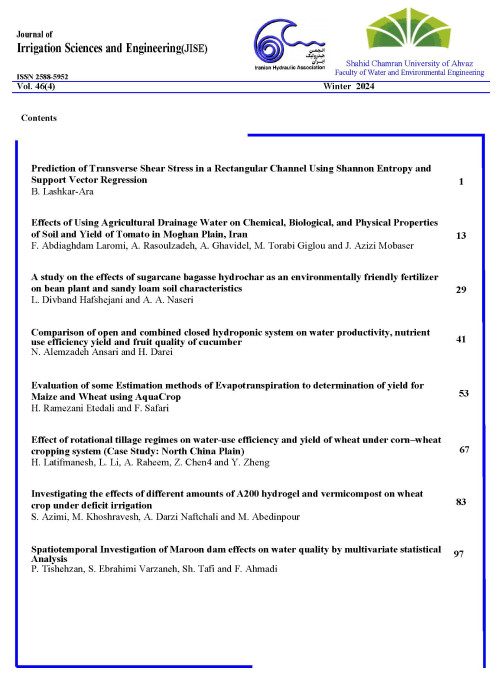Modeling of Groundwater Salinity Using Artificial Neural Network (ANN) and Geographic Information System (GIS) on the Caspian Southern Coasts
Groundwater is one of the most important water resources on earth, and water salinity studies are very important for the protection and planning of water resources, especially in arid and semiarid areas such as Iran. Groundwater currently accounts for more than 90 percent of Iran’s total drinking water consumption. This water resource is less susceptible to bacterial pollution and evaporation than surface water, and hence it is more important than surface water.
An ANN includes three layers, namely, input layer, hidden layer and output layer. A network can have more than one hidden layer. In this study, multi-layer perceptron (MLP) was applied to simulate groundwater salinity. MLP is generated through adding one or more hidden layers to one-layer perceptron and can solve complex problems. The feed-forward neural network was the first and simplest type of artificial neural network devised. In a feed-forward network, the information moves in only one direction, forward, from the input nodes, through the hidden nodes and to the output nodes. In the first stage of simulation, all data were normalized and divided into three classes: training data (65% of all data), test data (25% of all data) and cross validation data (10 % of all data). The different transfer functions such as hyperbolic tangent and sigmoid transfer functions were evaluated. Based on the results of this study (through trial-and-error method), the hyperbolic tangent transfer function was the best transfer function. Artificial neural network (ANN) is an efficient tool in hydrologic studies. In this study, an integration of ANN and GIS (the geographic information system) was applied to simulate groundwater salinity. ANN and GIS were, indeed, used for simulation purposes and as a pre-processing and post-processing system of the applied data, respectively. Thus, GIS was applied as an efficient tool to provide the base maps and to estimate the model’s quantitative parameters. Different digital/base maps were provided in GIS environment including DEM, transmissivity of aquifer formations, water table depth, precipitation values and distance from Caspian Sea and water resources using topographic maps of the region and EC values using water salinity secondary data. Different piezometric wells were selected to simulate groundwater salinity (EC). In GIS pre-processing stage, raster layers of the input factors were provided and combined using overlay analysis with a pixel size 1×1 km. Therefore, the surface of study plain was separated to more than 10000 geo-referenced pixels (1×1km). These pixels had values of model inputs or groundwater salinity factors (transmissivity of aquifer formation, water table depth and the distance from water resource). We inserted the site coordinate for every pixel automatically in the GIS medium. Pixels data (networks inputs and coordinate) were exported from GIS and then imported to NeuroSolutions software. In ANN medium, groundwater salinity (EC) was simulated using the validated optimum network for all of the 10000 pixels (the whole study plain).
- حق عضویت دریافتی صرف حمایت از نشریات عضو و نگهداری، تکمیل و توسعه مگیران میشود.
- پرداخت حق اشتراک و دانلود مقالات اجازه بازنشر آن در سایر رسانههای چاپی و دیجیتال را به کاربر نمیدهد.


